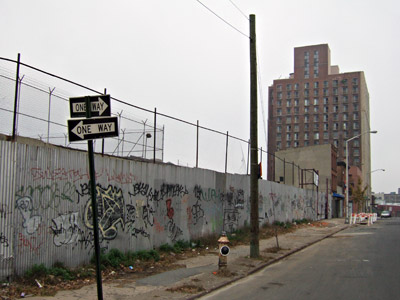Anbinder: “After a brief hiatus, Americans once again considered Five Points ‘the worst slum that ever was‘” (361).
Orsi: “According to Harlem’s Italian chroniclers, these sickly, ‘so-called Puerto Ricans,’ ‘pouring into’ the neighborhood, destroyed cara Harlem and laid seige to the Church of Our Lady of Mount Carmel” (330).
Pritchett: “Like the efforts of Brownsville activists in other areas, the fight for better schools saw Brownsville take one step forward and several steps back” (132).
Sharman: “In 1961 Jane Jacobs cited East Harlem specifically as a neighborhood well on its way to ‘unslumming’ on its own before private leaders undermined investment and the city destroyed what progress had been made by erecting massive housing projects” (201).

All the quotes above mention retrogression within New York, whether it be racial, economical, or social. Why is this? Well, significant changes first seemed to begin immediately following war. In Five Points’ case, it was the Civil War, and World War II related to Brownsville and Harlem. Both instances caused intense financial stress on the areas, eventually leading to plunges in the population; the white community left for better housing options, while black and Latino groups took their place. According to Anbinder, tenements tried their best to resolve issues prevalent even before the war. These adjustments included “frequent” inspections and window installments, but failed to resolve problems with noise, stench, overcrowding, and darkness. As more and more minorities entered the area, affordable housing availability diminished, and unattractive basement dwellings once again opened. Such offensive living conditions were immortalized by photographer Jacob Riis.
With Riis’ evidence, it is brought to our attention that not much has changed in later years for areas such as Brownsville and East Harlem. The influx of blacks and Latinos into Brownsville created an image of a ghetto, leaving commentators to believe that “this will be another Harlem” (Pritchett 142). Public housing projects drew the minorities into the area with their low-cost availability, and were soon blamed for the decline of the area; as African American populations increased, so did crime and drug-trading. Even worse, “as public housing became more identified as minority housing, this became a self-reinforcing process” (Pritchett 116). Middle-income projects were proposed in order to provide neighborhood diversity. Some said that such institutions would increase segregation, but this was a better option than more low-income settlements that would make permanent the idea of the area as an ethnic settlement. When the institutions were implemented, schools already deteriorating from years of neglect became even more overcrowded. Brownsville made no effort to fix such a problem because: 1) housing issues were more important, and 2) people (AKA, whites) were leaving anyway. Social and religious institutions could not keep up with the booming population of color, and were often razed for more public housing.
The obsession with public housing was parallel to the obsession with race. Every plan considered the placement and ratio of whites, blacks, and Latinos. This prevalent social tension led to physical violence among its inhabitants. Minorities harmed other minorities, leaving people afraid to step out of their dwellings. Soon, even the minorities wanted to leave. Streets were clouded with mistrust and fear, especially since the Red Scare was in full swing. Although people made attempts to combat these issues with community organizations – such as the Brownsville Boys Club and the Brooklyn Jewish Community Center – conditions continued to worsen with passing time.
In East Harlem, when areas weren’t being razed for housing projects, they were abandoned. This process of “gentrification” continued until a patch of land was ready to be invested, according to Sharman’s article. Although it positively developed land at a later time, it immediately affected residents negatively by forcing them to relocate for the sake of urban renewal. Orsi’s article explains that not only were Italians forced out by the incoming Puerto Ricans, but they also wanted to leave after being associated with their skin color; southern Italians were discriminated as “Turks” by northern Italians, and were even sometimes identified as black. This further enforced the already existing hostility between the Italians and the African Americans.
Pritchett notes that “racial change occurred… when neighborhoods were no longer able to attract new white residents” (150). This relates to our in-class conversation the other week about whites as Times New Roman, the default “font” (race). Now that the areas are dominated by “minorities” (now majorities), would hypothetical-incoming whites be considered “minorities”? Or does the font-rule still apply in terms of being the default race?

